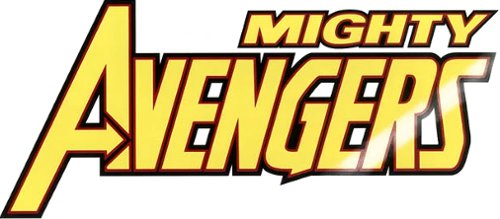Savage She-Hulk – (1980-1982)
The Savage She-Hulk #1 was the only issue by co-creators Stan Lee and John Buscema. In that 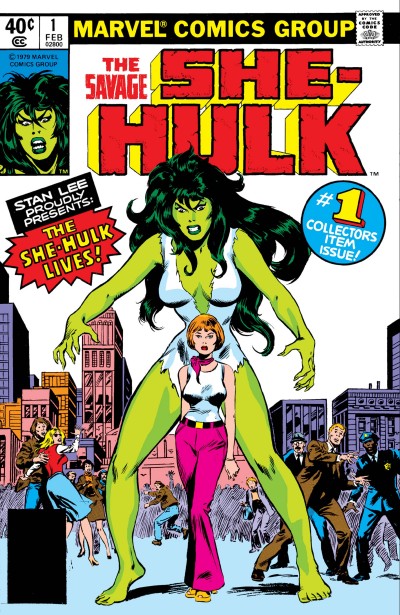 origin issue, Jennifer Walters was a new, up-and-coming lawyer… which put her in the sites of Nick Trask, the lead mob boss of Los Angeles. At the time, she was defending another gangster named Lou Monkton, who was being framed for a murder by Trask. Jennifer was thrilled when her cousin Bruce Banner showed up for a visit, but dismissed his concerns that her life could be in danger. When Trask’s hitmen gunned her down in front of Bruce, he rushed her to the house of her neighbor, who was a doctor, and he performed an emergency blood transfusion to save her life. Bruce left before too many questions could be asked and thus was not around to witness Jennifer turn into the She-Hulk while being attacked by the hitmen in the hospital. After she used her savagery to capture the criminals, her strength faded, transforming her back into a confused Jennifer Walters.
origin issue, Jennifer Walters was a new, up-and-coming lawyer… which put her in the sites of Nick Trask, the lead mob boss of Los Angeles. At the time, she was defending another gangster named Lou Monkton, who was being framed for a murder by Trask. Jennifer was thrilled when her cousin Bruce Banner showed up for a visit, but dismissed his concerns that her life could be in danger. When Trask’s hitmen gunned her down in front of Bruce, he rushed her to the house of her neighbor, who was a doctor, and he performed an emergency blood transfusion to save her life. Bruce left before too many questions could be asked and thus was not around to witness Jennifer turn into the She-Hulk while being attacked by the hitmen in the hospital. After she used her savagery to capture the criminals, her strength faded, transforming her back into a confused Jennifer Walters.
After this solid origin story, She-Hulk enjoyed a consistent creative team of David Craft as writer and Mike Vosburg as artist for the remainder of her 25-issue run. Issue #2 introduced most of her supporting cast and established that her life as a lawyer would be as much of a focus as her crime fighting adventures. Buck Bukowski was the assistant district attorney and her rival in most cases. Her life-long friend Jill truly believed in and supported her. The sheriff of Los Angeles was her father, who over the years had been distant due to the death of his wife (and Jen’s mother) to the crime lord Nick Trask. This established the reason that both Jen and her father had such a strong sense of justice. Finally, the doctor neighbor and his wife turned out to be another set of life-long friends who had a pre-med student son named Zapper. Jennifer had babysat Zapper when they were younger and it was obvious that he had a crush on the older woman. Unfortunately, Trask continued targeting Jennifer and had her car’s brakes rigged to fail. Jill drove the car instead and She-Hulk tried to save her. However, when Bukowski saw Jen’s car being chased by She-Hulk, he assumed that She-Hulk was trying to hurt Jen. Thus, he accidentally prevented She-Hulk from saving Jill and she died in the resulting crash.
After establishing all of the characters, Savage She-Hulk became a bit monster of the week, mixed with a little courtroom drama. She-Hulk could not prevent her transformation in times of emotional distress and would often run out of the middle of proceedings. The next few issues focused on Nick Trask as the overarching villain, trying both to kill She-Hulk and frame her for murder. Buck and Jennifer allowed her father and the public to believe she had been the one to die in the car crash for her protection and thus She-Hulk found her father blaming her for his daughter’s death. By issue #5, She-Hulk managed to save Lou Monkton’s life, permanently defeat Trask, clear Lou of his charges and reveal that she was still alive. She would not be able to rid herself of the murder charge of killing Jill until issue #17, when Buck realized he had prevented She-Hulk from saving the woman. At this point, the public finally saw her as more of a hero than a 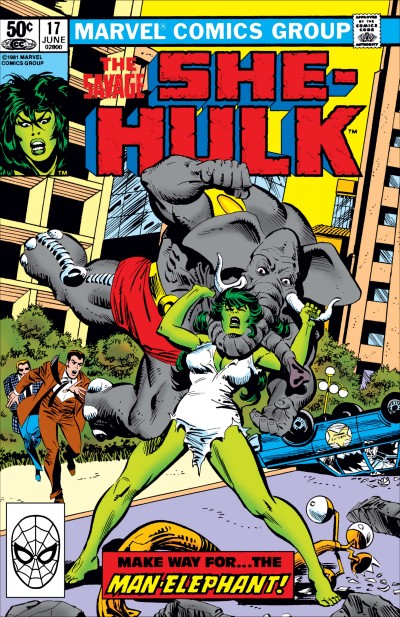 villain. Additionally, a second romantic interest was introduced in issue #7, Richard Rory, a supporting character from the Man-Thing comic. After a two-issue fling, he would relocate to LA and start a love triangle in which Jennifer was attracted to Rory, while She-Hulk was attracted to Zapper. After She-Hulk started becoming weak and ill around issue #11, Zapper, who had discovered her secret, teamed up with Dr. Michael Morbius to create a serum that cured her illness and allowed her to transform between personas at will.
villain. Additionally, a second romantic interest was introduced in issue #7, Richard Rory, a supporting character from the Man-Thing comic. After a two-issue fling, he would relocate to LA and start a love triangle in which Jennifer was attracted to Rory, while She-Hulk was attracted to Zapper. After She-Hulk started becoming weak and ill around issue #11, Zapper, who had discovered her secret, teamed up with Dr. Michael Morbius to create a serum that cured her illness and allowed her to transform between personas at will.
The second half of the series really focused in on the difference of personalities between Jennifer and She-Hulk. Jennifer’s life seemed to be crumbling around her and she actually preferred being She-Hulk, a theme that would resurface many times through future writers. Those around her began comparing this dependence to an addiction. Slowly, those same trusted people started to betray her and cause her to retreat further into She-Hulk. Her father thought her attitude had changed too much and began dating a money-hungry woman who purposely tried to drive a wedge between the two. Rory became insecure about their relationship and Zapper was tricked into leading She-Hulk into a trap with a mad scientist simply known as “Doc.” This last straw caused her to renounce Jennifer Walters and run away. However, Doc was secretly taking over the underworld under the guise of a proxy named Shade. He started sending various mutants after She-Hulk in an attempt to destroy her and solidify his claim. It would turn out that all the mutants were the same person in various evolved states and they would ultimately team up with She-Hulk in the final issue to defeat Doc. Additionally in this final issue, her father would reconcile with her, she would choose to remain She-Hulk over Jennifer and thus she declared her love for Zapper over Rory.
| Writers | Artists |
|---|---|
|
|
Avengers (1st series) - (1982-1984)
While She-Hulk’s original title only lasted two years, the editor in chief Jim Shooter must have wanted to keep She-Hulk around, as he soon had her join the Avengers in issue #221. However, the first half dozen issues saw various creative teams in both writer and artist until finally Roger Stern became the regular writer in issue #227. In issue #222, the recurring gag of She-Hulk finding herself without her clothes first surfaced. Additionally, a few long-lasting friendships formed in this first Avengers tenure, including a fast rapport forming with Wasp, who continually tried to help her find an apartment. She also formed a rivalry with Hawkeye, as well as beginning overt flirtations with both him and new member Starfox, showing her increasing comfortability with her sexuality. Despite living in New York City, She-Hulk would often bemoan how bored she felt compared to LA and was quick to enthusiastically and aggressively jump into action.
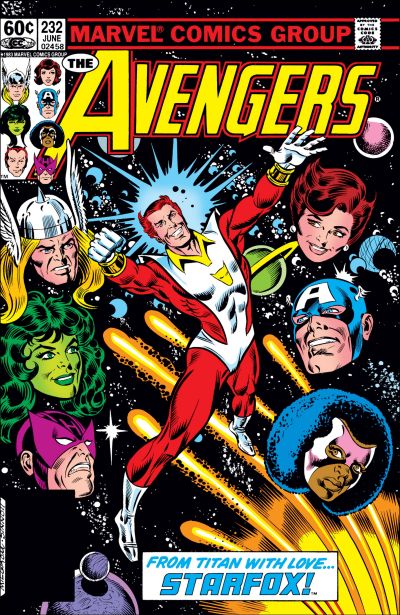 Issue #228 gave a little more focus to She-Hulk and even acknowledged her past as a lawyer. It also became apparent that She-Hulk disliked being Jennifer Walters when the Masters of Evil transformed her against her will. While she did not utilize her law skills during the Trial of Hank Pym, she did convince a captured Shocker that cooperating was in his best legal interest. While not much occurred in issue #233, it did have the distinction of being the first time John Byrne would write and draw She-Hulk. Her service would end in between issues #242 and #243 due to her having joined the Fantastic Four while on Battleworld during the Marvel Super-Heroes Secret Wars maxi-series by Jim Shooter. It was during this story that She-Hulk would meet her arch-nemesis Titania and get thoroughly beaten to a pulp by her and a gang of super-strong villains. This would be one of the few times Titania would beat She-Hulk in her mostly one-sided rivalry for many years to come.
Issue #228 gave a little more focus to She-Hulk and even acknowledged her past as a lawyer. It also became apparent that She-Hulk disliked being Jennifer Walters when the Masters of Evil transformed her against her will. While she did not utilize her law skills during the Trial of Hank Pym, she did convince a captured Shocker that cooperating was in his best legal interest. While not much occurred in issue #233, it did have the distinction of being the first time John Byrne would write and draw She-Hulk. Her service would end in between issues #242 and #243 due to her having joined the Fantastic Four while on Battleworld during the Marvel Super-Heroes Secret Wars maxi-series by Jim Shooter. It was during this story that She-Hulk would meet her arch-nemesis Titania and get thoroughly beaten to a pulp by her and a gang of super-strong villains. This would be one of the few times Titania would beat She-Hulk in her mostly one-sided rivalry for many years to come.
| Writers | Artists |
|---|---|
|
|
Fantastic Four (1st series) – (1984-1987)
When he decided to remain on Battleworld following the events of the Marvel Super-Heroes Secret Wars miniseries, the Thing personally requested She-Hulk to take his spot on the Fantastic Four. While she fit in easily as the new super-strong member of the team, it took her quite a bit 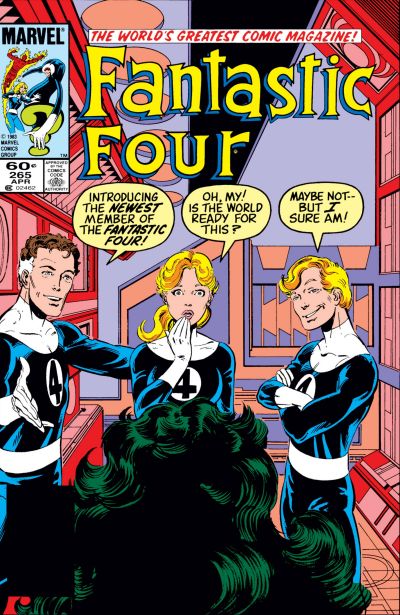 longer to feel at home among such an established family. A rare bout of insecurity eventually faded as her friendships blossomed among the other FF members. When Wyatt Wingfoot, the handsome best friend of Johnny Storm, started living with them, She-Hulk was quick to express her romantic interest. However, any relationship was kept loose, and she also established her attraction to Hercules during this time. While mostly in the background during the run, Wyatt developed strong feelings for Jen and would continue to come in and out of her life over the years, arguably becoming the defining boyfriend of her publication history. The pair would (years later) come close to getting married in the limited series She-Hulk: Ceremony, though the continuity of that series is potentially under question.
longer to feel at home among such an established family. A rare bout of insecurity eventually faded as her friendships blossomed among the other FF members. When Wyatt Wingfoot, the handsome best friend of Johnny Storm, started living with them, She-Hulk was quick to express her romantic interest. However, any relationship was kept loose, and she also established her attraction to Hercules during this time. While mostly in the background during the run, Wyatt developed strong feelings for Jen and would continue to come in and out of her life over the years, arguably becoming the defining boyfriend of her publication history. The pair would (years later) come close to getting married in the limited series She-Hulk: Ceremony, though the continuity of that series is potentially under question.
Her insecurity faded quickly and John Byrne took the joke of She-Hulk being disrobed in compromising situations to its most extreme in issue #275. In that issue, a sleazy magazine publisher (who looked suspiciously similar to Stan Lee) hired a helicopter pilot to fly near the roof of the Baxter Building where She-Hulk regularly sun-bathed in the nude. Wyatt and Jen’s relationship seemed to strengthen during the following attempts to recover the photos before they saw print but ultimately failed. Luckily, the printers “color-corrected” the green woman to pink flesh tones. This specific plot point would actually resurface years later in issue #28 of Sensational She-Hulk, where she used the magazine to get out of a marketing contract with Mephisto by ruining her family-friendly appeal.
When the Thing returned to Earth from Battleworld, he found that Johnny had started dating his 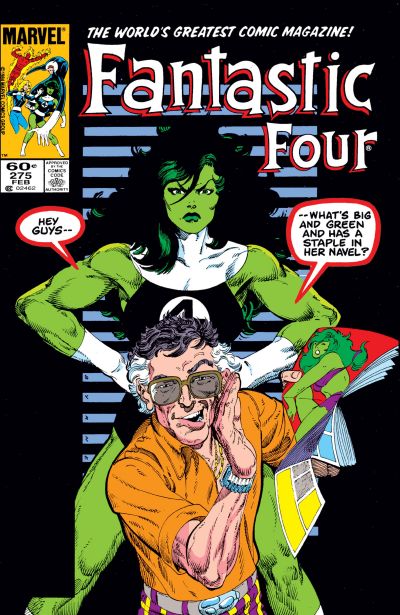 girlfriend Alicia and refused to rejoin the team. She-Hulk, who was ready (though reluctant) to hand back her spot, was more than happy to continue adventuring with the team. She went on several more adventures through both space and time, always ready with a joke and some muscle. She developed an even stronger relationship with the Invisible Girl after the Psycho-Man and the Hate-Monger manipulated her into villainy. The two powerful female FF members fought a brutal battle and, despite the efforts of the villains and a loose tie-in with the events of Secret Wars II, She-Hulk and the rest of the family were able to break through Sue's brainwashing. Sue would rechristen herself the Invisible Woman and was quick to answer any of She-Hulk's calls for help in the future. Jen's friendships even converged when the Fantastic Four started living in Avengers Mansion while the destroyed Baxter Building was being rebuilt, following its destruction at the hands of Doctor Doom.
girlfriend Alicia and refused to rejoin the team. She-Hulk, who was ready (though reluctant) to hand back her spot, was more than happy to continue adventuring with the team. She went on several more adventures through both space and time, always ready with a joke and some muscle. She developed an even stronger relationship with the Invisible Girl after the Psycho-Man and the Hate-Monger manipulated her into villainy. The two powerful female FF members fought a brutal battle and, despite the efforts of the villains and a loose tie-in with the events of Secret Wars II, She-Hulk and the rest of the family were able to break through Sue's brainwashing. Sue would rechristen herself the Invisible Woman and was quick to answer any of She-Hulk's calls for help in the future. Jen's friendships even converged when the Fantastic Four started living in Avengers Mansion while the destroyed Baxter Building was being rebuilt, following its destruction at the hands of Doctor Doom.
During this time, John Byrne created a dedicated graphic novel titled “The Sensational She-Hulk.” 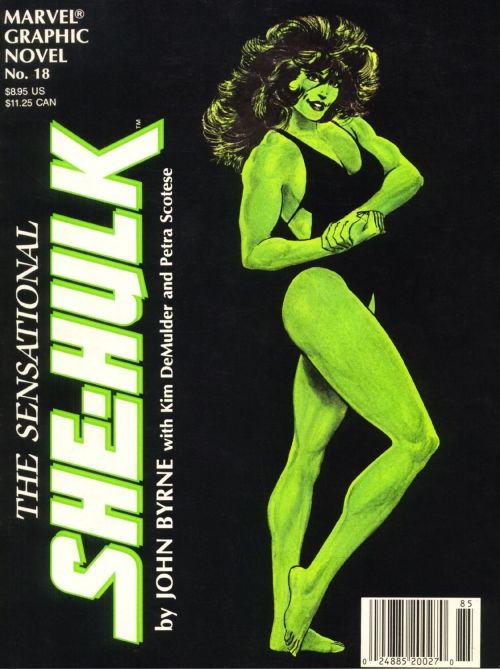 This book canonically took place before Fantastic Four #286 and marked Byrne’s first solo She-Hulk work. In the story, She-Hulk’s personal life with Wyatt was explored a bit more deeply before a date night was ruined by some SHIELD mandroids arriving to arrest her. John Byrne, of course, found excuses for She-Hulk to remove her clothes multiple times throughout the story and it was her transformation into Jennifer that helped her escape confinement. However, in order to defeat the villain behind the whole ordeal (a swarm of sentient cockroaches), she ended up losing her ability to transform into Jennifer Walters permanently as the price for stopping a nuclear reactor from exploding. This revelation did not bother her in the slightest, as she preferred being She-Hulk. Eventually, John Byrne left Fantastic Four with issue #295 and She-Hulk only made a few more appearances before leaving in issue #300. Issue #299 had her drinking and then fighting with the recently returned Thing, who was in a funk over Alicia leaving him for Johnny. Thing accepting his place back on the team left a natural conclusion to She-Hulk’s tenure with the Fantastic Four.
This book canonically took place before Fantastic Four #286 and marked Byrne’s first solo She-Hulk work. In the story, She-Hulk’s personal life with Wyatt was explored a bit more deeply before a date night was ruined by some SHIELD mandroids arriving to arrest her. John Byrne, of course, found excuses for She-Hulk to remove her clothes multiple times throughout the story and it was her transformation into Jennifer that helped her escape confinement. However, in order to defeat the villain behind the whole ordeal (a swarm of sentient cockroaches), she ended up losing her ability to transform into Jennifer Walters permanently as the price for stopping a nuclear reactor from exploding. This revelation did not bother her in the slightest, as she preferred being She-Hulk. Eventually, John Byrne left Fantastic Four with issue #295 and She-Hulk only made a few more appearances before leaving in issue #300. Issue #299 had her drinking and then fighting with the recently returned Thing, who was in a funk over Alicia leaving him for Johnny. Thing accepting his place back on the team left a natural conclusion to She-Hulk’s tenure with the Fantastic Four.
| Writers | Artists |
|---|---|
|
|
Avengers (1st series) – (1987-1988)
Having left the Fantastic Four, She-Hulk was quickly picked back up by the Avengers writer that made her of interest to Byrne in the first place. At the tail end of Roger Stern’s acclaimed run, the Avengers team had been beaten badly in the Under Siege story line, which put Hercules in a coma. She-Hulk provided some much-needed muscle as the team was brought to Olympus to 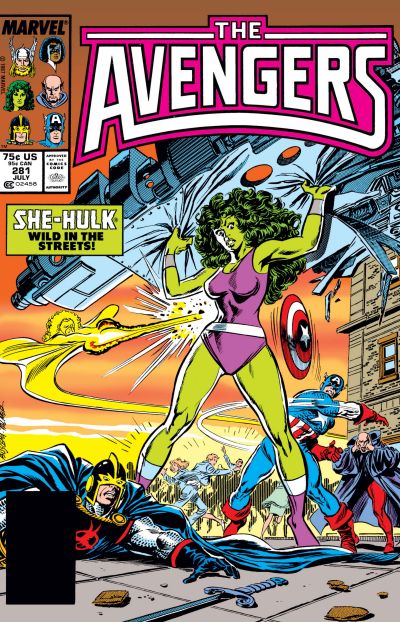 battle the gods as punishment for Hercules’ fate. Throughout the arc, She-Hulk reverted to her impatient and battle-hungry personality seen earlier in Stern’s run. In the final story by Stern called Heavy Metal, She-Hulk also first met the Awesome Android, who would feature prominently in her future titles. Ralph Macchio stepped in to finish the story when Roger Stern left halfway through.
battle the gods as punishment for Hercules’ fate. Throughout the arc, She-Hulk reverted to her impatient and battle-hungry personality seen earlier in Stern’s run. In the final story by Stern called Heavy Metal, She-Hulk also first met the Awesome Android, who would feature prominently in her future titles. Ralph Macchio stepped in to finish the story when Roger Stern left halfway through.
Walter Simonson took over next and featured She-Hulk in his cast for seven issues before she left the team. She-Hulk did not change much during this run, though she did crack quite a lot of jokes. During this time period, Sub-Mariner left the team after his wife Marrina changed into a monster and had to be killed. Next, Doctor Druid was manipulated by Nebula of the Kang Council into taking over the leadership of the team through mental influence. The Kang Council learned that Nebula was a traitor and helped reverse the mind-control placed on She-Hulk. An enraged Jennifer attacked Nebula, which led Nebula and Doctor Druid to become lost in the time-stream. Feeling guilty and violated, She-Hulk felt the need to leave the Avengers.
| Writers | Artists |
|---|---|
|
|
